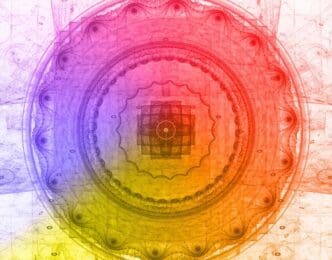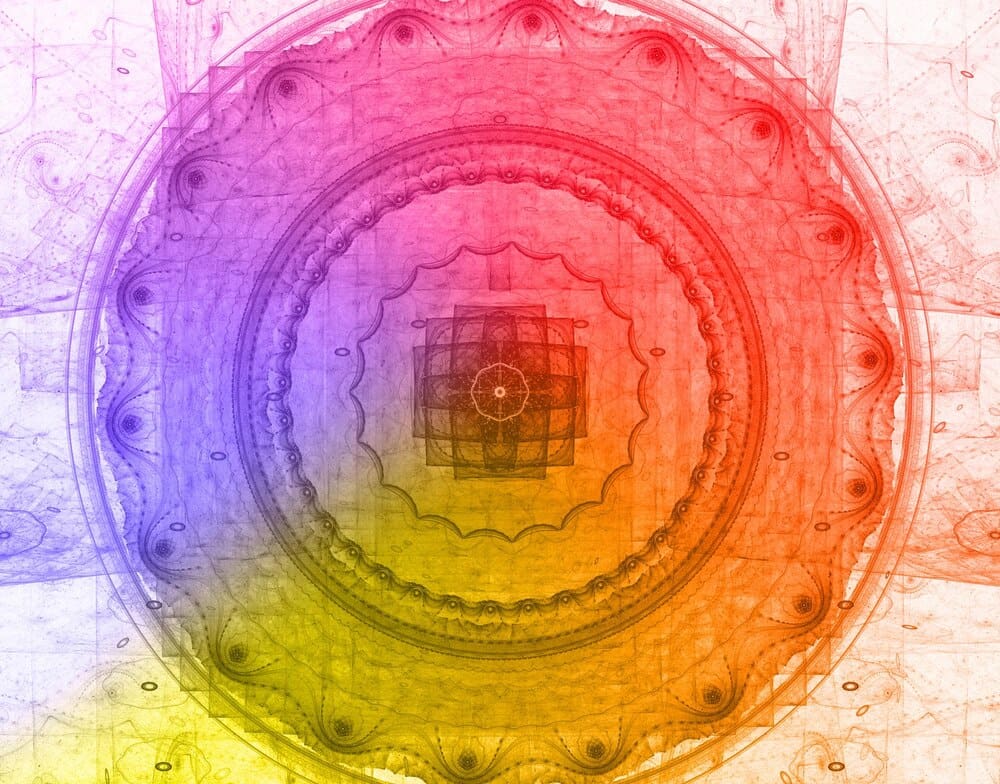The intricate dance of the cosmos, as mapped by Vedic Astrology, is governed by a fundamental principle of relationships, a celestial social network known as Naisargika Graha Maitri, or natural planetary friendships and enmities. This system dictates how the nine grahas (planets) interact with one another, creating a dynamic of harmony or conflict that profoundly influences an individual’s personality, life path, and the very fabric of their destiny. Understanding who is a friend, foe, or neutral party in your birth chart is the key to deciphering your innate strengths, internal struggles, and the karmic lessons you are here to learn, providing a roadmap for navigating life with greater cosmic awareness.
The Foundation: What is Naisargika Graha Maitri?
At its core, Naisargika Graha Maitri refers to the permanent, unchanging relationships between the planets. These connections are not arbitrary; they are rooted in the inherent nature and mythology of the celestial bodies. Think of it less like a high school clique and more like a cosmic cabinet of ministers, each with a specific portfolio and a natural disposition towards their colleagues. Some work together seamlessly, their energies amplifying each other, while others have conflicting agendas, leading to friction and tension wherever they meet in a horoscope.
This concept is the first layer of analysis an astrologer uses to gauge the tone of a birth chart. When planets that are natural friends come together, they support each other’s agendas, leading to positive and constructive outcomes. Conversely, when natural enemies are conjunct or aspecting one another, they create a state of “planetary war” or Graha Yuddha, manifesting as internal conflict, obstacles, and significant life challenges that require conscious effort to resolve.
The Two Cosmic Camps: Devas vs. Asuras
Vedic astrology divides the planets into two primary teams, each with a distinct leader and philosophy. This division forms the bedrock of the entire friendship and enmity system. The interactions between and within these groups define the core dynamics of a chart.
The Deva Group: The Divine Team
Led by the Sun (Surya), the king of the solar system, this group represents the forces of dharma, righteousness, and spiritual evolution. Its members are concerned with cosmic law, wisdom, and the soul’s journey.
- The Sun (Surya): The King, representing the soul, ego, authority, and father.
- The Moon (Chandra): The Queen, representing the mind, emotions, and mother.
- Mars (Mangal): The Commander, representing courage, action, energy, and siblings.
- Jupiter (Guru): The Advisor, representing wisdom, expansion, philosophy, and teachers.
These planets are generally considered friends with one another. The Sun’s authority is supported by Jupiter’s wisdom, the Moon’s mind, and Mars’s action. They work together to uphold order and promote spiritual growth.
The Asura Group: The Material Team
Led by Venus (Shukra), the guru of the Asuras, this group represents the forces of material desire, worldly pleasure, and practical manifestation. Its members are concerned with wealth, comfort, structure, and navigating the complexities of the material plane.
- Venus (Shukra): The Guru, representing love, luxury, relationships, and pleasure.
- Saturn (Shani): The Servant/Judge, representing discipline, structure, karma, and hardship.
- Rahu & Ketu: The Shadowy Nodes, representing obsession, foreign influences, spiritual detachment, and past-life karma.
This team is focused on the tangible world. Venus seeks pleasure, while Saturn provides the structure and discipline to achieve and maintain it. Rahu and Ketu add an element of karmic destiny and sudden, transformative events to the mix.
Mercury: The Neutral Prince
Mercury (Budha) holds a unique position. As the celestial Prince, he is adaptable, intellectual, and communicative. He is considered neutral and takes on the qualities of the planets he associates with. Mercury is friendly with the Sun and Venus but maintains enmity with the Moon, stemming from mythological narratives. Its primary allegiance is fluid, making it a key swing player in the chart’s dynamics.
A Planet-by-Planet Guide to Relationships
Understanding the specific relationships of each planet is crucial for accurate chart interpretation. Here is a detailed breakdown of the natural friendships, enmities, and neutralities.
The Sun (Surya)
- Friends: Moon, Mars, Jupiter (His divine cabinet)
- Enemies: Venus, Saturn (The opposing camp’s leaders)
- Neutral: Mercury (His son, with whom he has an intellectual, if not deeply personal, relationship)
The Sun’s enmity with Saturn is one of the most famous in astrology, representing the mythological conflict between father and son. When these two are together, it can indicate struggles with authority, low self-esteem, and challenges with one’s father.
The Moon (Chandra)
- Friends: Sun, Mercury
- Enemies: None (The Moon, as the universal mother, holds no permanent grudges)
- Neutral: Mars, Jupiter, Venus, Saturn
While the Moon considers Mercury a friend, Mercury sees the Moon as an enemy. This one-sided relationship can manifest as a conflict between the emotional mind (Moon) and the logical intellect (Mercury).
Mars (Mangal)
- Friends: Sun, Moon, Jupiter (His allies in the Deva camp)
- Enemies: Mercury
- Neutral: Venus, Saturn
The enmity between fiery, impulsive Mars and analytical, communicative Mercury can create arguments, sharp speech, and difficulty translating thoughts into effective action.
Mercury (Budha)
- Friends: Sun, Venus
- Enemies: Moon
- Neutral: Mars, Jupiter, Saturn
Mercury’s adaptable nature allows it to be neutral to many planets, reflecting its role as a messenger who must interact with all parties.
Jupiter (Guru)
- Friends: Sun, Moon, Mars (His Deva teammates)
- Enemies: Mercury, Venus
- Neutral: Saturn
Jupiter and Venus are the two great gurus, but they lead opposing philosophical camps—one spiritual (Jupiter) and one material (Venus). Their enmity reflects the classic tension between spiritual expansion and worldly indulgence.
Venus (Shukra)
- Friends: Mercury, Saturn (His Asura camp allies)
- Enemies: Sun, Moon
- Neutral: Mars, Jupiter
Venus’s focus on pleasure and relationships is naturally at odds with the Sun’s ascetic and authoritative nature. Their enmity can cause issues in relationships and creative expression.
Saturn (Shani)
- Friends: Mercury, Venus (His fellow materialists)
- Enemies: Sun, Moon, Mars (The entire core of the Deva camp)
- Neutral: Jupiter
Saturn is the great karmic enforcer, and its cold, restrictive nature is inherently opposed to the light of the Sun, the emotion of the Moon, and the impulsive energy of Mars. These combinations are often the source of the most significant life lessons.
Rahu and Ketu
As shadow planets, Rahu and Ketu’s relationships are often viewed through the lens of their dispositors (the lord of the sign they occupy). However, a general framework is as follows:
- Rahu’s Friends: Venus, Saturn, Mercury
- Ketu’s Friends: Mars, Jupiter
- Enemies: Sun, Moon, Mars (for Rahu), Sun, Moon (for Ketu)
The Next Level: Temporary and Compound Friendships
While natural friendship is the foundation, a deeper analysis requires two more layers to create a truly personalized understanding of a chart’s dynamics.
Tatkalika Maitri: Temporary Friendship
This concept acknowledges that planetary relationships can shift based on their specific placement in an individual’s birth chart. It is a friendship of circumstance or proximity. The rule is simple: planets positioned in the 2nd, 3rd, 4th, 10th, 11th, or 12th houses from another planet become its temporary friends. Planets in any other house (1st, 5th, 6th, 7th, 8th, 9th) are considered temporary enemies.
This adds a crucial layer of context. For example, the Sun and Saturn are natural enemies. But if Saturn is placed in the 2nd house from the Sun in a specific chart, they become temporary friends, which can soften their inherent antagonism.
Panchadha Maitri: Five-Fold Friendship
This is the final, composite relationship status, derived by combining the natural (Naisargika) and temporary (Tatkalika) states. This five-fold classification gives the most nuanced and accurate picture of how two planets will behave in a chart.
The combinations are as follows:
- Natural Friend + Temporary Friend = Great Friend (Adhi Mitra)
- Natural Enemy + Temporary Enemy = Great Enemy (Adhi Shatru)
- Natural Friend + Temporary Enemy = Neutral (Sama)
- Natural Enemy + Temporary Friend = Neutral (Sama)
- Natural Neutral + Temporary Friend = Friend (Mitra)
- Natural Neutral + Temporary Enemy = Enemy (Shatru)
When two planets become “Great Friends,” their combined energy is exceptionally powerful and beneficial. When they are “Great Enemies,” their conjunction or aspect can be the source of profound and persistent challenges in a person’s life.
Conclusion: The Web of Cosmic Influence
The system of planetary friendships and enmities is far more than an abstract astrological doctrine; it is a profound psychological and spiritual tool. It reveals the intricate web of energies that shape our inner world and outer experiences. By understanding these relationships, we move beyond a simplistic view of “good” or “bad” planets and begin to appreciate the complex interplay of forces that define us. This knowledge empowers us to recognize our inherent conflicts, lean into our natural strengths, and ultimately navigate our karmic journey with greater wisdom, clarity, and purpose.








